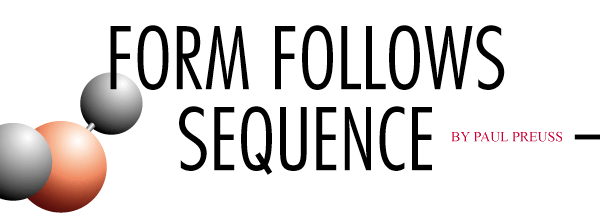 |
||||
| "Form
follows function," said architect Louis Sullivan, arguing that a building's
purpose should determine its design. If Sullivan had been a biologist
he might have put it the other way around. With no designer except
the rough and tumble of evolution, a protein's function is largely
determined by its form; to find out what an unknown protein does,
it's often essential to work out its shape. |
||||
|
Ever since James Watson and Francis Crick solved the double helix structure of dna in 1953, biology's most formidable structural challenge has been the "protein folding problem"-learning how nature gets from a gene, a length of dna that encodes the order of amino-acid residues in a string, to a working protein, that same string intricately folded into all the pockets and creases and knobs essential to the physics and chemistry of life. While protein structures are being collected at a steadily increasing pace, knowledge of gene sequences is exploding. The Human Genome Project, begun by the Department of Energy and the National Institutes of Health less than ten years ago, will finish a draft of all 50,000 to 100,000 human genes-all three billion base-pairs-sometime this year. The majority of the proteins these myriad genes code for do not resemble any already known. "The
more information you have, the more kinds of information you need
to make sense of it," says Daniel Rokhsar, head of the Computational
and Theoretical Biology Department in the Lab's Physical Biosciences
Division and a professor of physics at the University of California
at Berkeley. "Without a simultaneous explosion in computation-powerful
computers and flexible programs-we'll be overwhelmed." |
||||
| < Research Review | Top ^ | Next > |